Education
2012 – Demographics
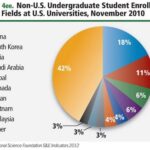
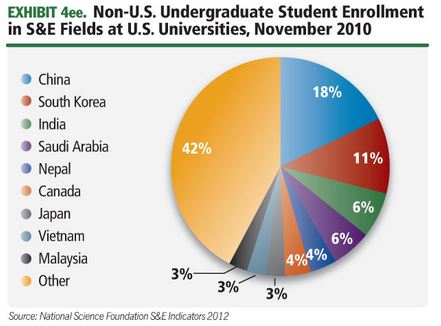
Universities in the United States attract a large number of foreign students. The largest proportion of these students comes from China, followed by South Korea and India. Retaining these highly trained graduates is important, particularly at a time when global competition for this talent is increasing. . .
2012 – Degrees Awarded
To understand the size of the pool of qualified students available for the future space workforce, it is important to know how many science, engineering, and aerospace degrees are being awarded.
2012 – NAEP
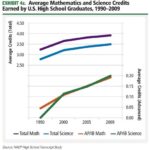
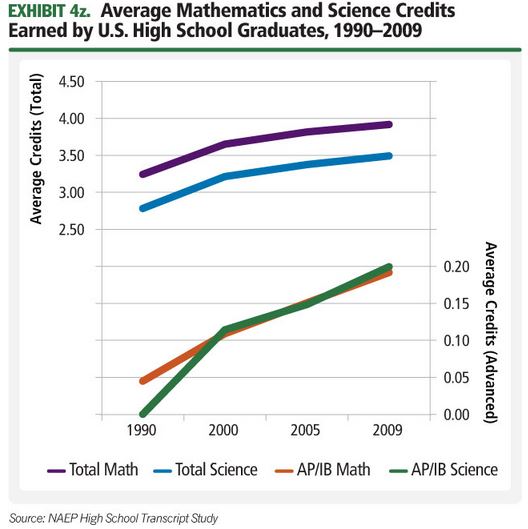
The production of highly skilled scientists and engineers has its foundation in student performance during early education at the primary and secondary levels. Long-term trends in these areas show that students’ mathematics performance in the United States has been slowly improving over the past three decades.
2012 – Top-level Trends
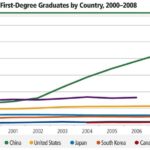
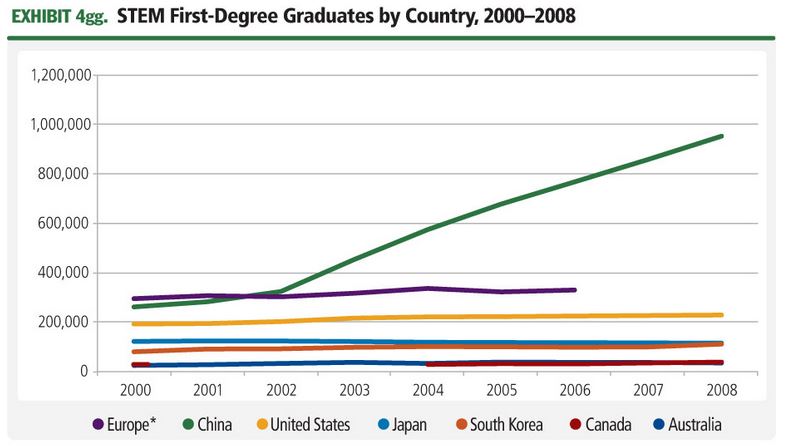
Science and engineering education provides the advanced skills required for a competitive space workforce. It also cultivates the expertise needed for research and innovation. Understanding trends in the production of highly skilled scientists and engineers can provide an indication of long-term prospects for the space workforce.
Program for International Student Assessment (PISA)
Just as the United States measures progress in early mathematics and science proficiency, other nations also track student progress. Many of these countries, including the United States, participate in the Programme for International Student Assessment (PISA) evaluation process.
Global Space Education
The worldwide space sector employs hundreds of thousands of skilled workers who require high levels of education and competency. To maintain this workforce over time, space employers require a steady supply of trained workers capable of performing tasks in key scientific and engineering disciplines.
2011 – Top-level Trends – Snapshot
In 2010, the global space workforce continued to weather the effects of the global financial crisis, recession, and ongoing economic uncertainty with relative resiliency. Declines in American space employment caused hardship but were relatively small compared to the overall global space workforce.
2011 – NAEP – Snapshot
STEM achievement in primary and secondary schools is an indicator of how well the United States is ensuring that students are later prepared to pursue STEM degrees, enabling them to enter the space workforce. Every two years, the U.S. National Center for Education Statistics (NCES) National Assessment of Educational Progress (NAEP) uses standardized tests to rate the mathematics and science proficiency of fourth- and eighth-grade students.
2011 – Demographics – Snapshot
Both the government and industry space sectors in the United States show a high demand for STEM-educated professionals. As of December 2011, ## of NASA’s ## employees—##% of its civil servant workforce—worked in STEM-related fields, mainly as professionals working in engineering, mathematics, biological and physical sciences, or medicine.
2011 – U.S. Space-Related Education Trends – Snapshot
There is a broad consensus that high-quality STEM education is critical to producing a workforce capable of maintaining a competitive edge in numerous technological areas, including space. However, space leaders, elected officials, and government agencies in the United States have frequently expressed concerns that the supply of potential new STEM workers is not adequate to meet future demands.